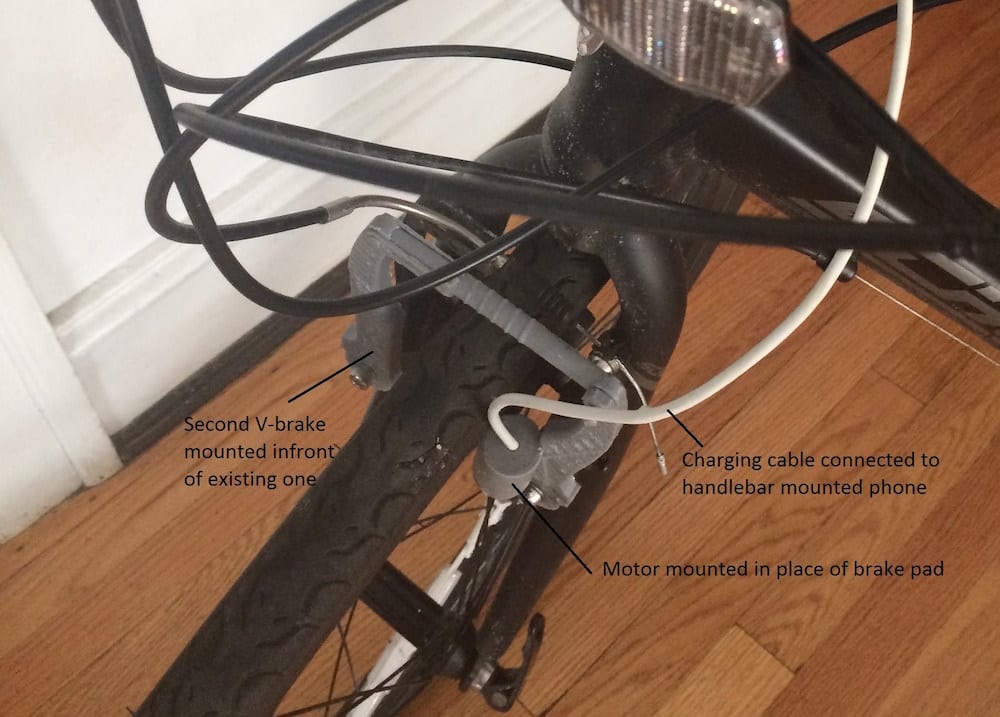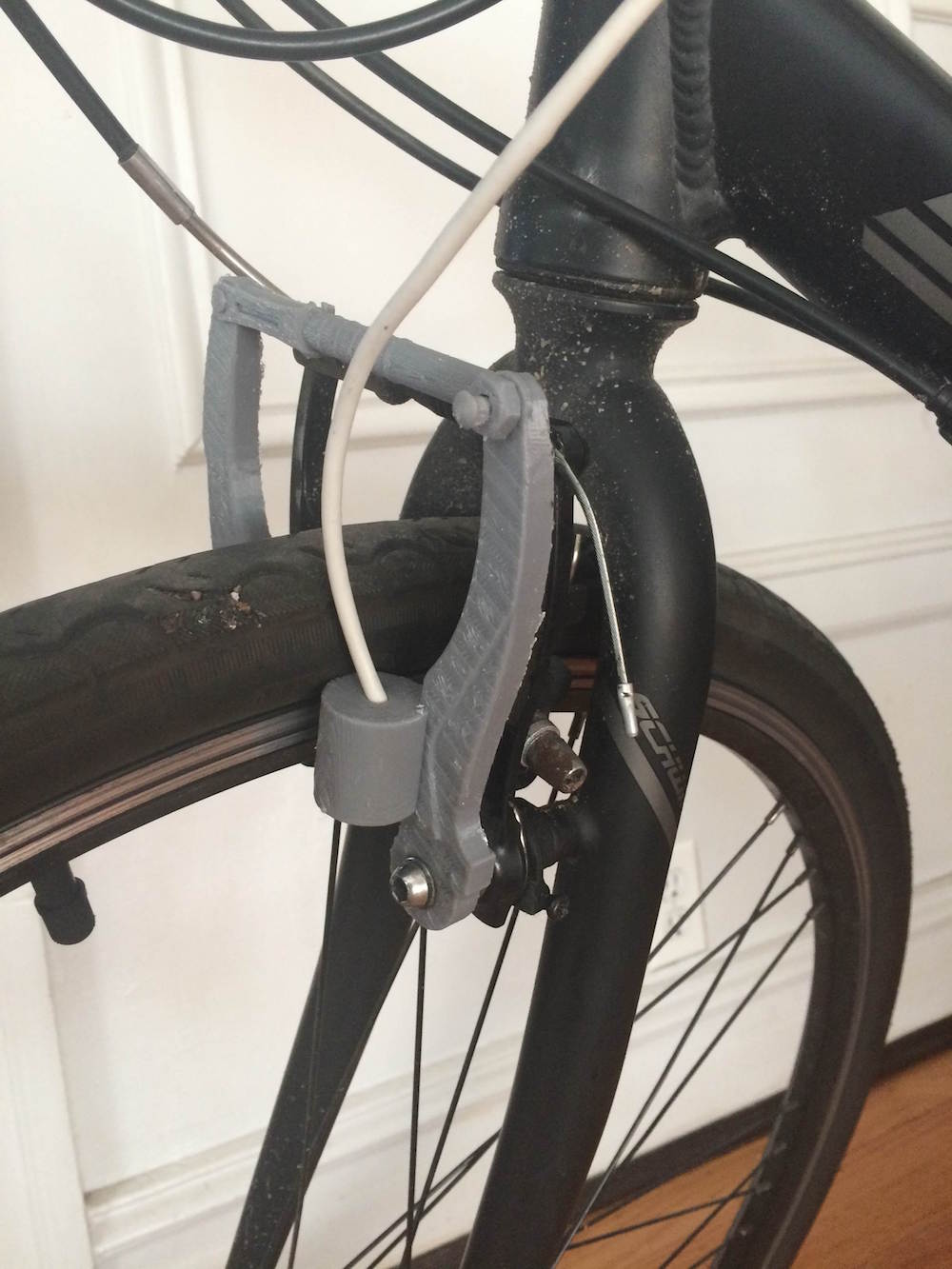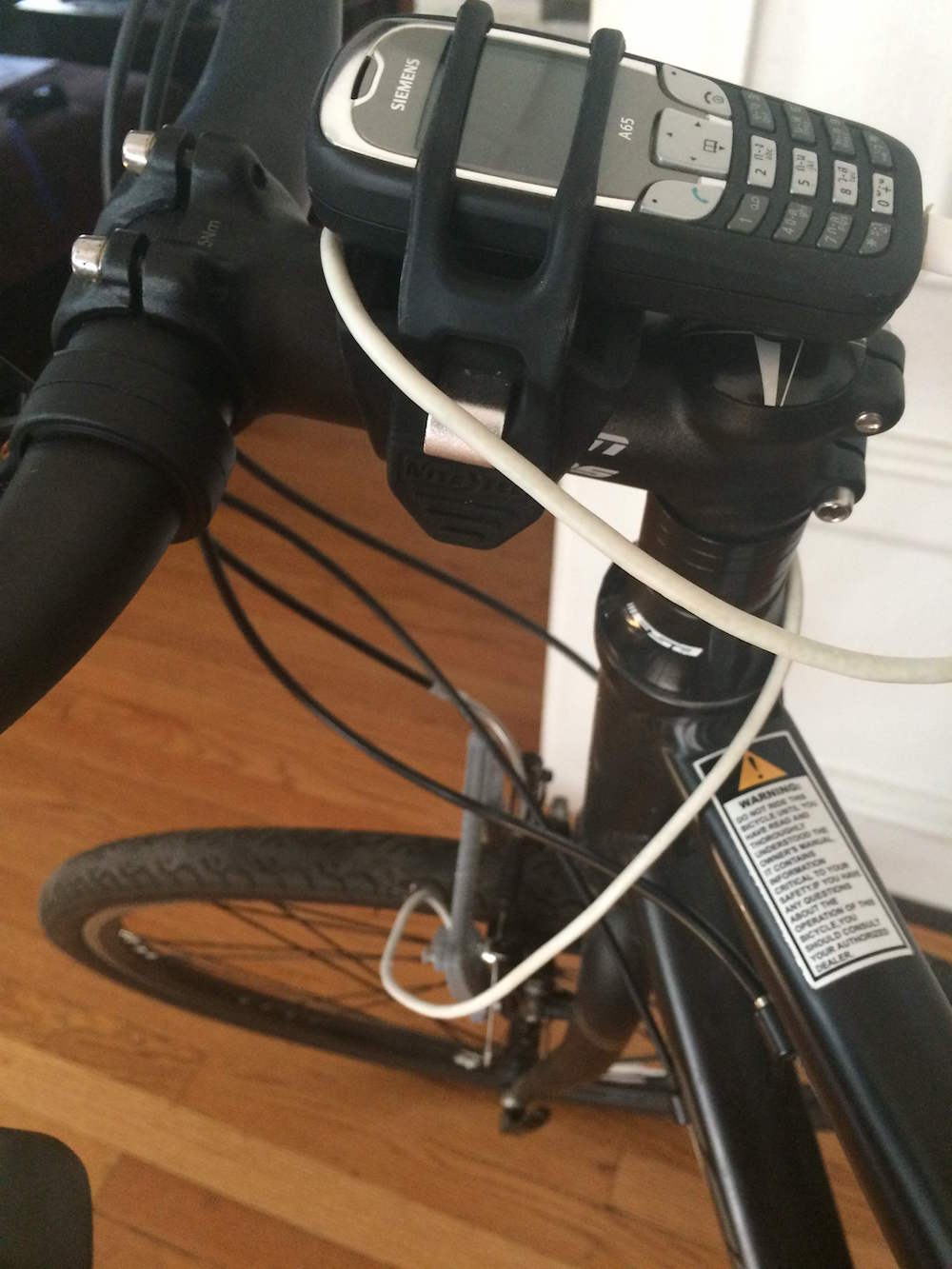Mobile phones have become a hugely important tool for almost everyone, even in remote parts of the world such as rural Africa where banking over SMS is very popular. However in these places it can also be difficult and expensive to charge a phone. There is not always a stable power grid nearby and much of the power is generated from dirty fuels. The Mini Pedal Power Plant aims to solve this problem by providing a mobile, bicycle powered charging solution for cell phones and other small devices. Bicycles are prevalent in rural Africa and there is service and repair infrastructure around them. New products in this region will be better utilized if they are familiar and serviceable. To that end, Mini Pedal Power Plant is designed to be mounted to a bicycle using common bicycle hardware. As seen in the accompanying photos, power would be generated from a motor taking the place of the brake pad on a standard V-brake housing, which can be easily installed in front of an existing V-brake. Mounting via other common hardware would be an essential feature. Mini Pedal Power Plant could also be mounted onto the rear wheel as needed.
The motor would not require contact with the wheel, but rather would contain neodymium magnets on its shaft and would be mounted near the metal wheel rim. Utilizing Eddy Currents and Lenz’s Law, the moving metal rim would impart a force on the magnets, causing the motor to spin. The spinning motor would then generate a current which could be used to charge low voltage devices. By using a friction free design, the motor can be better sealed from harsh environments and should be less prone to physical damage. Simple voltage control and protection circuitry would be integrated with the device, and a small external battery pack could be connected in series to provide smooth charging for the phone and for continued charging after dismounting the bicycle.
Bicycle phone chargers are prevalent in the US market, however almost all of them rely on a dynamo in contact with the bike wheel and many are of questionable quality. There are at least two friction free bicycle lights on the market, however they fall short by only using this technology to power an integrated light. By providing general charging, a wide variety of devices could be powered with the Mini Pedal Power Plant, instead of just one integrated light. Prototypes would be developed using 3D printing, and final designs via plastic injection molding in conjunction with sourcing existing bicycle hardware for mounting. To offset the challenges of direct marketing to rural Africa, units would be sold in developed counties with each sale directly gifting one device to rural Africa. Bicycle-focused African charity groups exist which would be valuable partners to facilitate distribution. This is a device I would use, a device I am excited to build, and a device I believe would directly benefit the daily lives of many people in the developing world.
Like this entry?
-
About the Entrant
- Name:Anthony Tamalonis
- Type of entry:individual
- Software used for this entry:Onshape, Eagle
- Patent status:none








